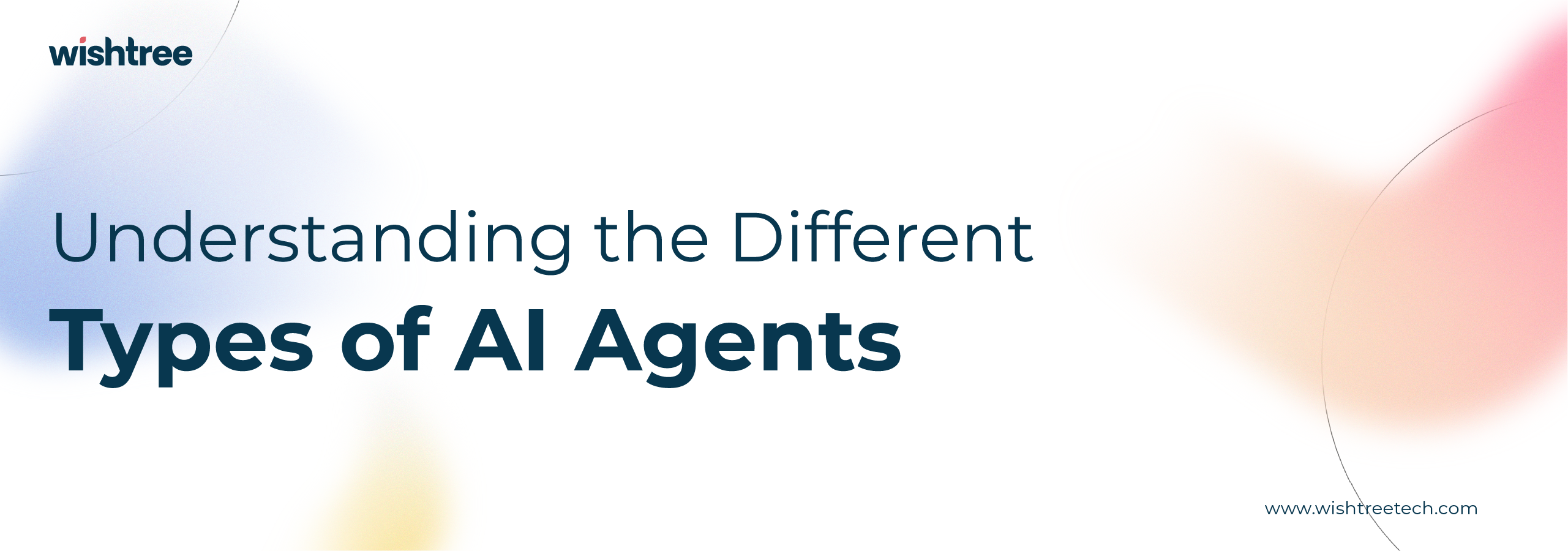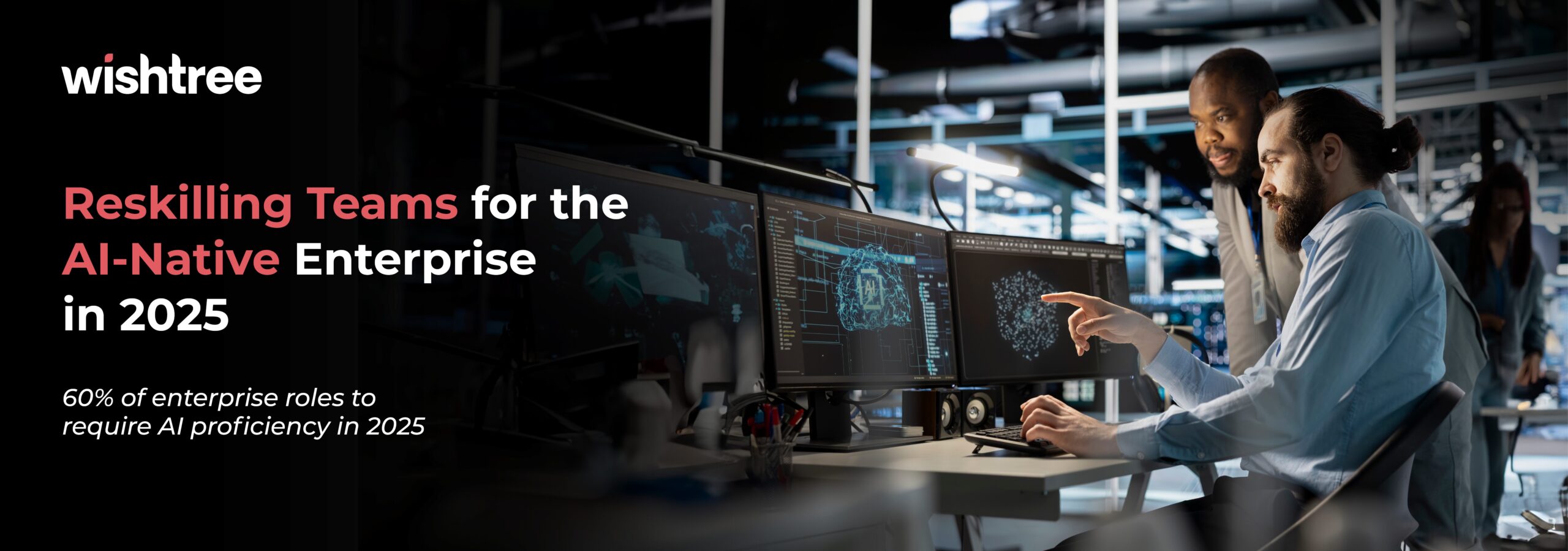Table of Contents
Artificial Intelligence (AI) agents, the virtual assistants powered by AI, have become indispensable in automating processes, generating insights, and optimizing performance across various sectors. These agents transcend traditional voice-based virtual assistants, acting as employees or partners to help achieve organizational goals.
However, not all AI agents are created equal. Some are simple, others complex; some proactive, while others are utility-oriented; some learning-oriented, and some fixed. In this blog, we’ll explore the different types of AI agents and their potential applications.
Types of AI Agents
Simple Reflex Agent
A simple reflex agent is an AI system that reacts directly to the current situation without considering past experiences or future consequences. It’s like a robot that only responds to what it sees right now.
How it works:
- Perceive: The agent senses its environment.
- Act: It chooses an action based on predefined rules.
Example: A thermostat that turns the heater on when it’s cold and off when it’s warm.
Advantages:
- Easy to design and implement.
- Fast and efficient.
- Good for stable environments with simple rules.
Disadvantages:
- Limited to immediate responses.
- Cannot handle complex situations or changes.
Model-Based Reflex Agent
A model-based reflex agent is smarter. It uses a mental model of the world to make decisions. This model helps it understand how its actions affect the environment.
How it works:
- Perceive: The agent senses its environment.
- Think: It updates its internal model based on what it perceives.
- Act: It chooses an action based on the model and its goals.
Example: A self-driving car that uses a map to navigate and avoid obstacles.
Advantages:
- Can handle more complex situations.
- Can learn from experience.
- More adaptable to changing environments.
Disadvantages:
- Requires more computational power.
- Can be difficult to build accurate models.
Goal-Based Agents
Goal-based agents are AI systems that focus on achieving specific objectives. They use planning and problem-solving to find the best way to reach their goals.
How it works:
- Perceive: The agent senses its environment.
- Think: It plans a sequence of actions to reach its goal.
- Act: It executes the plan.
Example: A chess-playing AI that tries to checkmate its opponent.
Advantages:
- Can handle complex tasks.
- Can adapt to changing environments.
- Can learn from experience.
Disadvantages:
- Can be computationally expensive.
- Requires accurate planning.
- May not be able to handle unexpected situations.
Utility-Based Agents
Utility-based agents are AI systems that make decisions based on maximizing their expected reward. They consider the potential outcomes of different actions and choose the one with the highest expected value.
How it works:
- Perceive: The agent senses its environment.
- Think: It evaluates the expected utility of different actions.
- Act: It chooses the action with the highest expected utility.
Example: A robot that decides where to search for a lost object based on the probability of finding it in different locations.
Advantages:
- Can handle uncertainty and risk.
- Can make flexible decisions.
- Can learn from experience.
Disadvantages:
- Requires accurate models of the environment.
- Can be computationally expensive.
- May not consider ethical or moral factors.
Learning Agents
Learning agents are AI systems that can improve their performance over time by learning from experience. They use machine learning algorithms to adapt to new situations.
How it works:
- Observe: The agent senses its environment.
- Learn: The agent uses data and feedback to update its knowledge.
- Act: The agent chooses actions based on its knowledge.
Example: A self-driving car that learns to navigate different roads and traffic conditions.
Advantages:
- Can adapt to changing environments.
- Can improve performance over time.
- Can handle complex tasks.
Disadvantages:
- Requires large amounts of data.
- Can be computationally expensive.
- May be prone to biases.
Hierarchical Agents
Hierarchical agents are AI systems that are organized into a hierarchy of levels. Higher-level agents oversee lower-level agents, which allows for better coordination and task management.
How it works:
- Decompose: Higher-level agents break down complex tasks into smaller subtasks.
- Assign: Subtasks are assigned to lower-level agents.
- Coordinate: Higher-level agents coordinate the activities of lower-level agents.
Example: A factory automation system where a central controller oversees multiple robots performing different tasks.
Advantages:
- Can handle complex tasks.
- Can improve efficiency and coordination.
- Can be more scalable.
Disadvantages:
- Can be difficult to design and implement.
- May be less flexible than flat hierarchies.
- Can be prone to bottlenecks if the hierarchy is not well-designed.
Real-World Examples of AI Agents
AI agents are becoming increasingly prevalent in our daily lives, from virtual assistants to self-driving cars.
Gemini: Google’s powerful language model, Gemini, is a testament to AI’s ability to learn and improve independently. It can generate human-quality text, translate languages, write different kinds of creative content, and answer your questions in an informative way.
AI Sandbox: Meta’s AI Sandbox empowers advertisers to create more engaging and personalized ads. By generating alternative text variations, different backgrounds, and cropping images, advertisers can experiment with various ad formats and reach their target audience more effectively.
Speak AI: This AI-powered transcription service makes it easy to convert audio and video into text. With features like embeddable recorders and integrations with popular platforms, Speak AI simplifies the process of capturing and analyzing spoken content.
Camel AGI: This agent framework uses role-based playing to guide chat agents towards task completion, making conversations more natural and engaging. It has applications in various fields, from customer service to gaming.
Zendesk AI: Zendesk’s AI solution enhances customer service by providing intelligent suggestions, detecting customer intent, and automating routine tasks. This allows agents to focus on more complex issues and provide better support.
Conclusion
The potential benefits of AI agents are vast. They can help you improve efficiency, reduce costs, and enhance customer experiences. You can also use them to solve complex problems that would be difficult or impossible for humans to address.
At Wishtree, we are committed to helping you harness the power of AI to your business goals. Our team of experts help you –
- Select the right AI agents for your needs
- Develop custom AI solutions
- Ensure that your AI initiatives are implemented ethically and responsibly
Ready to revolutionize your business with AI agents?
Contact us today to learn more about our AI services and how we can help you achieve your objectives.



